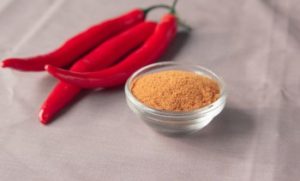Written by Paul Marrone, International Sales Manager, Admix, Inc.
 We recently helped a processor that makes chili sauce and dry spice powder mixes. Fun fact: Chile powder is made from pure ground chile peppers. Chili powder is a blend of chile powder and other spices like cumin, cayenne, peppercorn, oregano, salt, and paprika. Often something like silicon dioxide is added to the chili powder mixture to prevent clumping during storage so the dry powder “flows” well. Chile sauce can be made from either but often the sauce is seasoned with garlic, vinegar, water, thickeners, and other seasonings during the cook phase, so companies often start with raw chile powder to have better control of the final product flavor profiles.
We recently helped a processor that makes chili sauce and dry spice powder mixes. Fun fact: Chile powder is made from pure ground chile peppers. Chili powder is a blend of chile powder and other spices like cumin, cayenne, peppercorn, oregano, salt, and paprika. Often something like silicon dioxide is added to the chili powder mixture to prevent clumping during storage so the dry powder “flows” well. Chile sauce can be made from either but often the sauce is seasoned with garlic, vinegar, water, thickeners, and other seasonings during the cook phase, so companies often start with raw chile powder to have better control of the final product flavor profiles.
Hydrating raw chile powder can be as difficult as dispersing gums or thickeners. This processor was experiencing four major pain points due to inferior mixing that resulted in wasted time, wasted ingredients, unnecessary costs, and poor control of product quality. The problems were: 1) large amounts undissolved solids in the form of wet chile “paste” would be left on the bottom of the tank after each batch was pumped off to filling, 2) “rafts” of floating chili powder required manually submerging with a paddle during batching, 3) solids deposited on the sidewall (“bathtub ring”) and 4) lumps of partially hydrated powder in the final product had to be filtered out before bottling.
Because the processor had just invested in a new, large volume production plant, the production team was eager to find a solution that solved all the problems but would not require disturbing the current installation.
Our competitor’s equipment there is very similar to our Rotosolver® high shear in-tank mixer in appearance but theirs has a lower shear rate and develops much less overall pumping, which works ok with waterlike liquids, but process times increase to the point of failure as viscosity increases.
Complete utilization of the ingredients was very important, but shorter batch times was a critical metric for success here. Their 700-L batch was taking 90 minutes, and the 2000-L batch was taking 136 minutes. I proposed adding a 500-L tank with a Rotosolver® sized to achieve full dissolution in less than 15 minutes per batch. The 500-L batch would then be pumped off to the 700-L and 2,000-L tanks and the competitor’s equipment could still be used for the simple hold/blend process. I estimated the 2,000-L batch time would be as little as 60-minutes even allowing for tank-to-tank transfer times.
We were able to suggest a path forward that would provide immediate process improvements at a minimal cost. Contact us today for help with your mixing operation!

 Jesper Sæderup Lindeløv, Managing Director
Jesper Sæderup Lindeløv, Managing Director Knud Erik Juhl Jensen, General Manager, Admix Europe ApS
Knud Erik Juhl Jensen, General Manager, Admix Europe ApS
 Patrick Lakin, Director of Sales and Marketing
Patrick Lakin, Director of Sales and Marketing Kara Martakos, Human Resources Director
Kara Martakos, Human Resources Director Keith Cheries, Director of Sales Operations
Keith Cheries, Director of Sales Operations Eric Therriault, Vice President of Engineering
Eric Therriault, Vice President of Engineering Bob Trottier, Vice President of Operations
Bob Trottier, Vice President of Operations Dan Cameron, Chief Financial Officer
Dan Cameron, Chief Financial Officer Mike Rizzo, Chief Executive Officer
Mike Rizzo, Chief Executive Officer